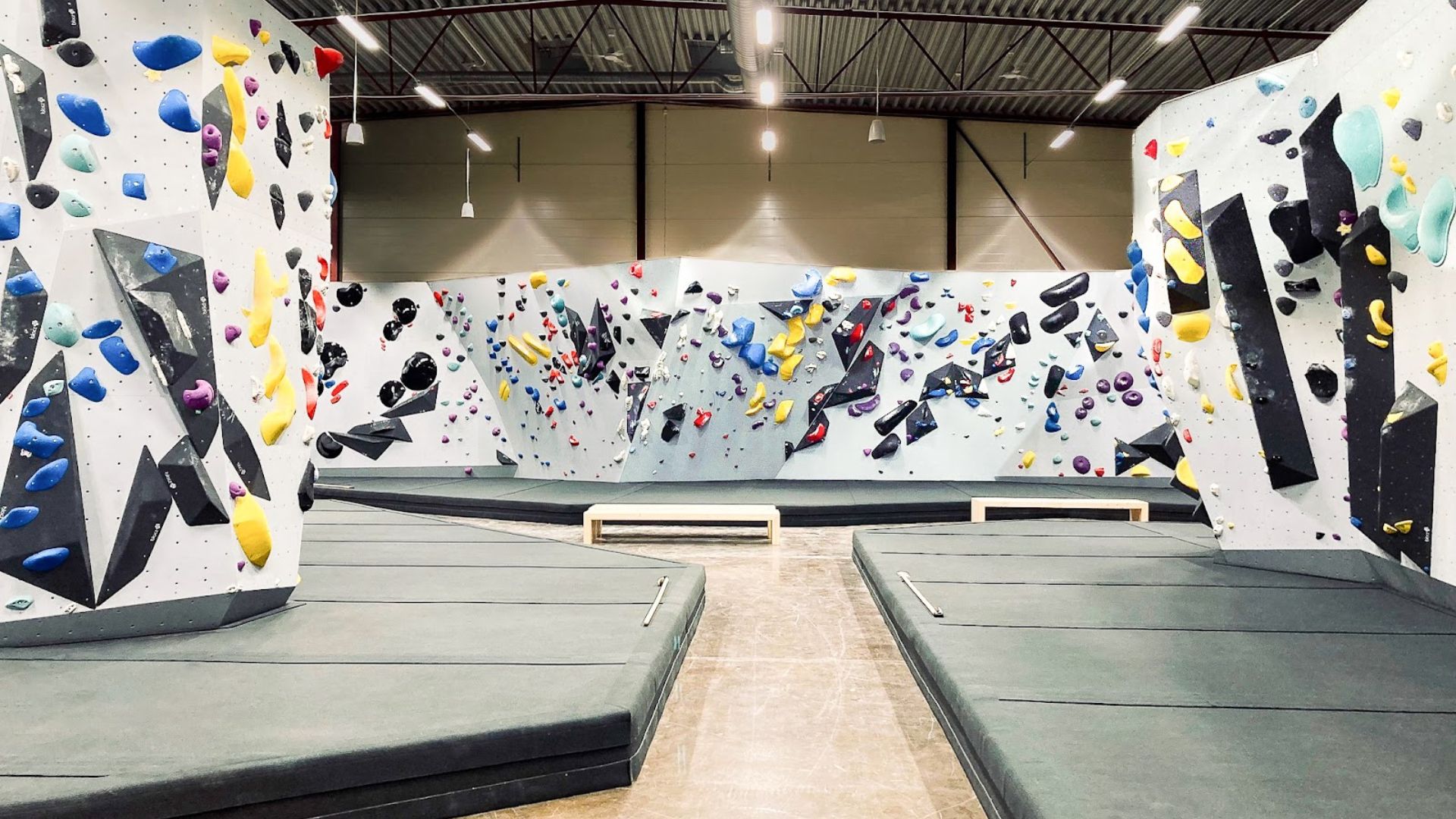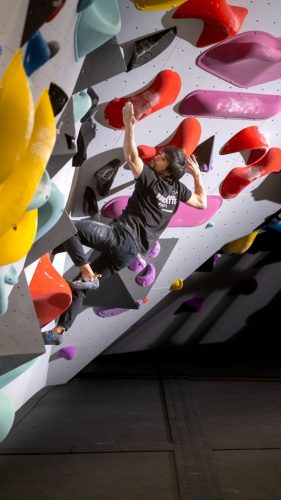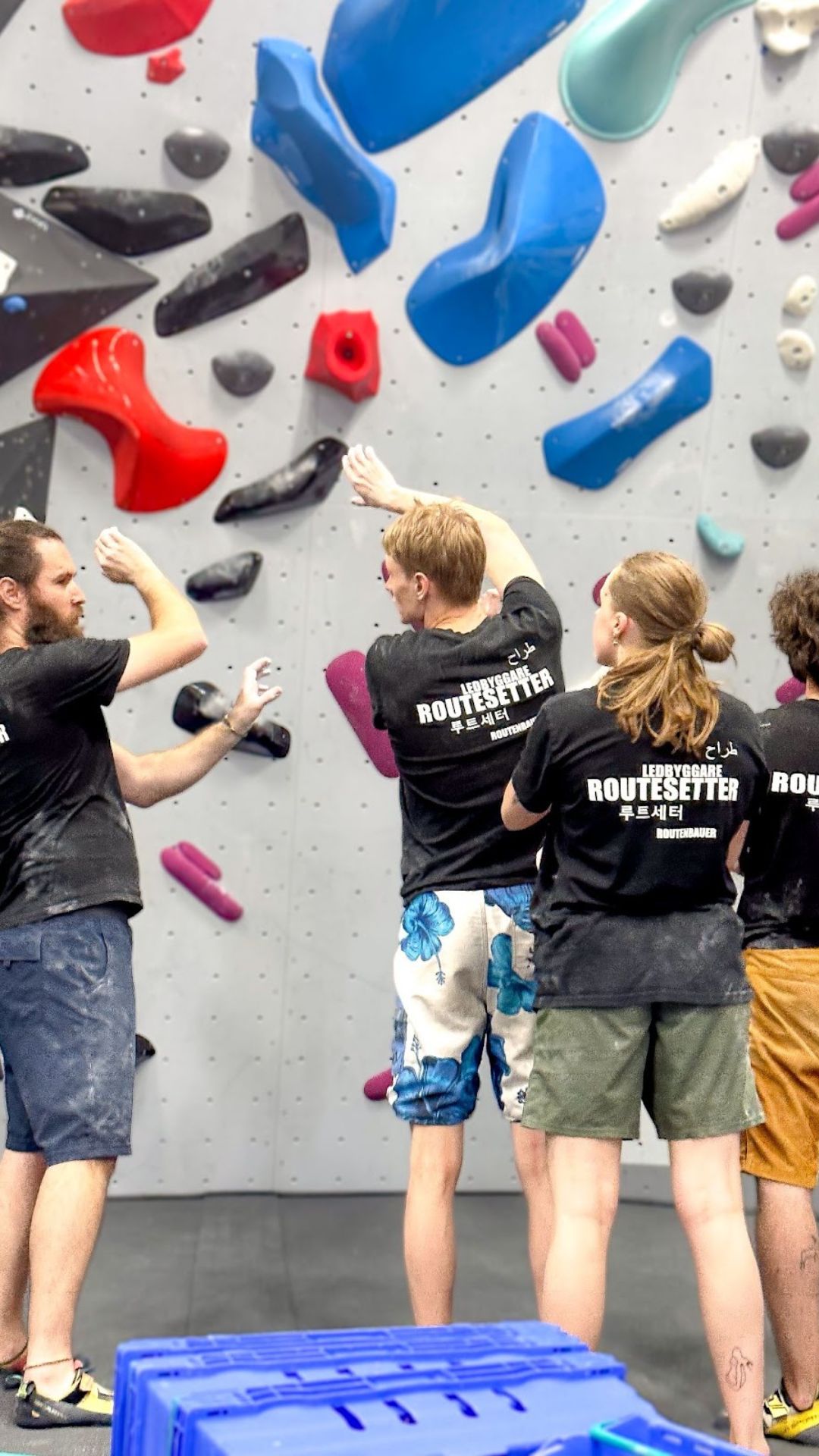
Klättercentret Helsingborg
Helsingborg, Sweden
Specs: Klättercentret Helsingborg, owned and operated by Petter Ulmert and Jan Sander, opened in Helsingborg, Sweden, on February 3rd this year. According to Ulmert, he and Sander met through climbing many years ago and, over time, “came up with the crazy idea of opening a climbing gym” in the south of Sweden, where indoor climbing was still gaining traction. After searching for the right place for many years, in 2016 the pair opened their first bouldering gym in Malmö, with a focus on making “climbing accessible, understandable and achievable,” said Ulmert. Now, Ulmert is the Managing Director of the two Malmö and Helsingborg facilities, in Skåne County, which together form the Klättercentret Skåne division of the Klättercentret gym chain.
Klättercentret originally opened around Stockholm in 2003 with the Klättercentret Solna location, founded by Concern Klättercentret, the business’s leadership group consisting of several operators. Klättercentret then began to grow steadily, opening nine more gyms throughout Sweden over the next 21 years. Helsingborg seemed like a fitting choice for the tenth location as “the eighth largest city in Sweden, with a population that we felt was large enough to support a new [gym],” Ulmert said, and also because there were few indoor climbing options in the area, and no commercial facilities like Klättercentret’s that were open year-round.

The leadership team chose to build the gym in a preexisting building because it is “very close to the city center and well-connected to public transport from anywhere in Helsingborg,” Ulmert explained. “It was also large enough to accommodate our needs in terms of the experience and spaces we wanted to be able to provide for customers.” In addition to 800 square meters (approx. 8,600 square feet) of climbing wall surface on 4.5-meter (14.8-foot) walls, Klättercentret Helsingborg offers a café, saunas, fitness equipment and a gear shop. The gym also has a “wooden training room” with fingerboards, campus boards and a Moon Board.
To successfully operate ten facilities, Ulmert said it has been necessary for Klättercentret to have solid business partners as well as a diverse range of entrepreneurial, financial, marketing and management skills on the teams developing and operating the gyms. “You need skills (and luck) in finding the right staff and co-workers that have the special skills of the business,” summed up Ulmert.

Walls: T-Wall
Flooring: Polskok
CRM Software: BRP
Website: www.klattercentret.se/helsingborg/
Instagram: @Klattercentret_Helsingborg
In Their Words: “Learn how to free yourself (and co-workers) from thinking too much like an experienced climber, otherwise you will struggle to understand what actually works for people who are not experienced climbers. It’s easy to get stuck in kind of an ‘echo chamber’ with how climbers think about climbing or setting routes, etc. This [principle] is crucial for growing your business. Climbing is a game we play, and for us to be a successful business we need to be skilled at inviting others to play and letting them succeed in the game. People want to feel awesome, and they need to be successful—that’s key for motivating customers to be members and climbers.” – Petter Ulmert, Klättercentret Helsingborg Co-Owner

Naomi is a personal trainer and a routesetter who has also worked at climbing gyms as a youth team coach. After starting college at Colorado State University in 2017, she wanted to make new friends and found climbing, fell in love, and now climbing dictates most of what she does. Naomi earned a bachelor’s degree in Ecosystem Science & Sustainability, and when not climbing she enjoys baking, gardening and crafting.








